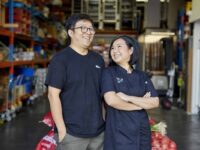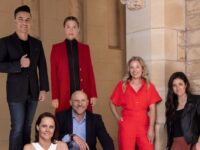This week, we talk to Anthony Cavanagh, CEO of Ganbina, a not-for-profit school to work transition program for Aboriginal and Torres Islander youths. Ganbina was established in the late 1990s originally as means for Aboriginal people to attain employment in government, but with many of them dropping out of school early due to poverty, it sought a more comprehensive approach, providing the needed education and skills to help Indigenous youths not only gain work but also a better future.
ISB: Why did you decide to focus on education when you came into the non-profit venture?
AC: Investing in education has a very high Social Return on Investment (SROI). So many jobs cannot be done successfully without a solid education behind you and it’s not just about employment. When Aboriginal kids complete their education they’re much less likely to end up on welfare or be incarcerated. We have many kids who are the first in their families to finish secondary school or go onto tertiary education, which inspires their families and communities. It doesn’t only break the cycle of disadvantage for that one kid, but has a flow-on effect that inspires their entire community.
ISB: How did your life experience shape the way you envisioned Ganbina to be?
AC: Education has always been a big part of my life and staying in school was pivotal for changing my future. I grew up in a family where no one had finished their education and I spent some time homeless in my teens.
Finishing school gave me the skills I needed to begin a corporate career, which I then passed onto my daughters who also went onto finish their education and have corporate careers of their own. So, I always knew from personal experience that education was the key. Education changes so much in a young Aboriginal person’s life. Education supported by life skills, which the Ganbina program helps build in young people, has been proven to create stronger, resilient young Aboriginal people.
ISB: What is the most unexpected challenge did you face early on with this venture and how did you overcome it?
AC: One of the biggest challenges was delivering our program during 2020. When the pandemic really hit in March, I sent all of our staff home for three weeks with full pay while we restructured our entire operations and transitioned our programs online accessing and using virtual platforms.
I’m very proud that, despite the immense challenges, 99 per cent of our kids completed their relevant year of employment, training and education that year. I’m very proud of the incredible resilience our team and kids showed during that year.
ISB: How are the youths under Ganbina schemes faring in school and in gaining employment?
AC: They are doing incredibly well. On average, 88 per cent of our Year 12 kids graduate. In comparison, the national Aboriginal Year 12 graduation rate is only 66 per cent and the non-Aboriginal Year 12 rate is 89 per cent. Our kids are on par with the non-Aboriginal rate, demonstrating that we are closing the gap for Year 12 attainment. Additionally two in three of our kids transition from education to further education or employment. Our program has been delivering results like these for almost 25 years.
ISB: What is your long term vision for the program?
AC: Our vision is not about curing Aboriginal employment, it’s about empowering young Aboriginal people to prevent and eliminate it within their own lifetimes. Our model is based on giving young Aboriginal people a hand up so they are confident, educated and skilled – this is the Ganbina generation.
Our program is a 50-year pilot program, which is two generations. We turn 25 next year and our ultimate vision is to be out of business by 2047. We want by that time for the Aboriginal kids who go through this program to lead their communities to achieve true social and economic equality with other Australians.
ISB: What advice can you give to others who might also be looking to make an impact in their own communities with a non-profit venture?
AC: Firstly, don’t start a program without first researching what is already successfully operating within your community. Program duplication in one community can negatively impact communities when only limited amounts of government funds are available.
New ideas and investment can be a critical source for communities to be ‘thriving together’ when programs are designed to meet community needs. What I’ve learnt is communities with varying levels of disadvantage need programs that can prove impact and have a desire to create sustainable, thriving communities as their primary focus.
















